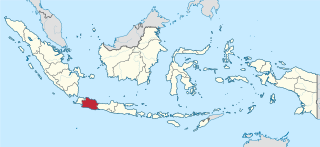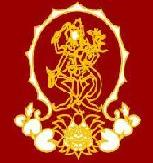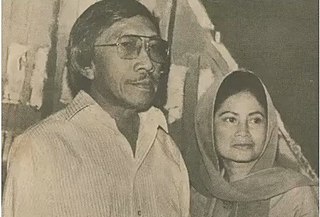
As it is a country with many different tribes and ethnic groups, the music of Indonesia itself is also very diverse, coming in hundreds of different forms and styles. Every region has its own culture and art, and as a result traditional music from area to area also uniquely differs from one another. For example, each traditional music are often accompanied by their very own dance and theatre. Contemporary music scene have also been heavily shaped by various foreign influences, such as America, Britain, Japan, Korea, and India.

Celempungan is a Sundanese musical genre that includes several musical instruments such as kacapi, kendang, goong/gong, and suling or rebab (optional), and Juru Kawih (singer). Kendang, the drum, controls the tempo of the ensemble and reinforces the meter.

West Java is a province of Indonesia on the western part of the island of Java, with its provincial capital in Bandung. West Java is bordered by the province of Banten and the country's capital region of Jakarta to the west, the Java Sea to the north, the province of Central Java to the east and the Indian Ocean to the south. With Banten, this province is the native homeland of the Sundanese people, the second-largest ethnic group in Indonesia.

Bandung is the capital city of West Java province of Indonesia. Located on the island of Java, Greater Bandung is the country's second-largest and most populous metropolitan area, with over 11 million inhabitants. Situated 768 meters above sea level, the highest point in the North area with an altitude of 1,050 meters and the lowest in the South is 675 meters above sea level, approximately 140 kilometres southeast of Jakarta, Bandung has cooler year-round temperatures than most other Indonesian cities. The city lies on a river basin surrounded by volcanic mountains that provide a natural defence system, which was the primary reason for the Dutch East Indies government's plan to move the capital from Batavia to Bandung.

The angklung is a musical instrument from the Sundanese people in Indonesia made of a varying number of bamboo tubes attached to a bamboo frame. The tubes are carved to have a resonant pitch when struck and are tuned to octaves, similar to Western handbells. The base of the frame is held in one hand, while the other hand shakes the instrument, causing a repeating note to sound. Each performer in an angklung ensemble is typically responsible for just one pitch, sounding their individual angklung at the appropriate times to produce complete melodies.

An art school is an educational institution with a primary focus on the visual arts, including fine art – especially illustration, painting, photography, sculpture, and graphic design. Art schools can offer elementary, secondary, post-secondary, or undergraduate programs, and can also offer a broad-based range of programs. There have been six major periods of art school curricula, and each one has had its own hand in developing modern institutions worldwide throughout all levels of education. Art schools also teach a variety of non-academic skills to many students.
The Indonesia Institute of the Arts Yogyakarta is a state-owned college in Bantul Regency, Special Region of Yogyakarta, Indonesia. It teaches visual, performing, and media arts in traditional Indonesian and modern international styles. ISI Yogyakarta was ranked number one in Indonesia on the QS World's Top Performing Arts Schools in 2022.

Kanjeng Pangeran Harjo Notoprojo, also known as Tjokrowasito, Wasitodipuro, Wasitodiningrat, among other names, was one of the most highly respected performers of Javanese gamelan. He led the Paku Alaman palace gamelan as well as the gamelan for the Radio Republik Indonesia Yogyakarta, and taught gamelan in universities around the world. He was also a noted composer and rebab performer.

Indonesia Institute of the Arts, Surakarta is an arts institute in Surakarta, Central Java, Indonesia. They are famous for teaching karawitan, wayang, Javanese dance, and other traditional crafts. The rector is Dr. Drs Guntur, M.Hum.

Gamelan, although Indonesia is its origin place, is found outside of that country. There are forms of gamelan that have developed outside Indonesia, such as American gamelan and Malay Gamelan in Malaysia.

Dance in Indonesia reflects the country's diversity of ethnicities and cultures. There are more than 1,300 ethnic groups in Indonesia. Austronesian roots and Melanesian tribal forms are visible, and influences ranging from neighboring Asian and even western styles through colonization. Each ethnic group has its own dances: there are more than 3,000 original dance forms in Indonesia. The old traditions of dance and drama are being preserved in the many dance schools which flourish not only in the courts but also in the modern, government-run or supervised art academies.

The Bantenese people are an indigenous ethnic group native to Banten in the westernmost part of Java island, Indonesia. The area of Banten province corresponds more or less with the area of the former Banten Sultanate, a Bantenese nation state that preceded Indonesia. In his book "The Sultanate of Banten", Guillot Claude writes on page 35: “These estates, owned by the Bantenese of Chinese descent, were concentrated around the village of Kelapadua.” Most of Bantenese are Sunni Muslim. The Bantenese speak the Bantenese language, a variety of the Sundanese language which does not have a general linguistic register, this language is called Basa Sunda Banten.

Indonesian Institute of Arts Denpasar abbreviated as ISI Denpasar is a college of art organized by the Ministry of National Education which is under and directly responsible to the Minister of National Education. ISI Denpasar functionally supervised by the Director General of Higher Education Department of Education. ISI Denpasar was established in 2003 which is the integration of the Indonesian Arts College (STSI) in Denpasar and Study Program of Art and Design (PSSRD) of Udayana University.
Bagong Kussudiardja was an Indonesian artist, contemporary dance choreographer and painter. Bagong’s career kicked off after Indonesia’s independence in 1945. As a dance choreographer, Bagong has choreographed more than 200 dances. Bagong perfected his skills by studying Japanese and Indian dances. In 1957 and 1958, Bagong trained under the well-known dance choreographer Martha Graham, known for her boundary-breaking techniques. Bagong then combined the modern moves with traditional Indonesian dances. After his training, he founded Pusat Latihan Tari Bagong Kussudiardja in 1958, followed by Padepokan Seni Bagong Kussudiardja in 1978.

Ahmad Sadali comes from a family with diversified batik and printing businesses. He was an Indonesian painter and art lecturer who is well-known for his abstract art, especially Abstract expressionism, and Cubism and Color field painting. Sadali was among the first and leading students of Ries Mulder, that represented "The Bandung School" of Indonesian art. He is considered one of the most important Indonesian modernist artists, and his works are among the highest priced Indonesian in International art markets. His signature Abstract style expresses elements of nature and spirituality in a bold yet nuanced manner.
SMK Negeri 10 Bandung is a public vocational high school for performing arts in West Java, Indonesia. The education period at SMK Negeri 10 Bandung is completed within three years and four years, starting from 10th grade to 12th grade and 10th grade to 13th grade.
Amrizal Salayan is an Indonesian artist and sculptor.













